Viewing search results for "Robeson County Public Library"
View All Posts
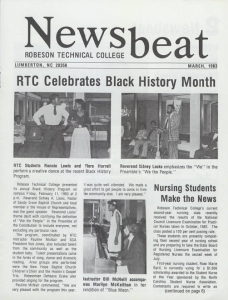

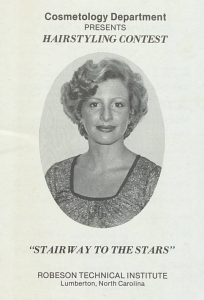
Featured Left to Right: Newsletter from Robeson Technical Institute, 1983; Program Promotion Poster, 2000; Program from Cosmetology Department Event, 1978
More than one hundred new items from Robeson Community College are now available on DigitalNC. Formerly known as Robeson Technical College, the college’s latest contributions include a wide assortment of newsletters, programs, advertisements, maps, posters, and images. These document the activities in and around the campus community from the late 1970’s to present.
These items could be useful for anyone interested in Community College programming, which might be helpful for researching small or local economies. They could also be useful for those interested in genealogy research in the Lumberton, N.C. area or Robeson County.
To see all the contributions from Robeson Community College, please visit their contributor page or the their website. To see all of the other campus publications and yearbooks from North Carolina hosted on DigitalNC, please visit the North Carolina Yearbooks Collections.
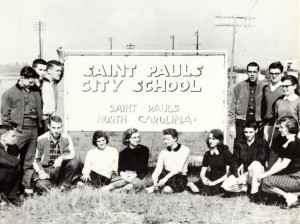 Yearbooks contributed by the Robeson County Public Library are now available on DigitalNC. The schools were in Bladen and Robeson Counties.
Yearbooks contributed by the Robeson County Public Library are now available on DigitalNC. The schools were in Bladen and Robeson Counties.
You can view our entire yearbooks collection online.
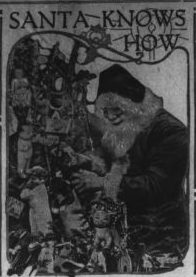
Thanks to our partner, University of North Carolina at Chapel Hill, new issues from five North Carolina newspapers are available on our website. These include:
There are also new issues of Oxford Public Ledger, courtesy of our partner Granville County Public Library, and The Yadkin Ripple, thanks to Yadkin County Public Library.
To browse all of our newspapers by location, date, and type, take a look at our North Carolina Newspapers collection.

This week we have another 61 titles up on DigitalNC, including our first additions from Charleston, Culler, Red Springs, Rutherfordton, and Sanford! Included in this batch, on the front page of the February 28, 1872 issue of Raleigh’s Weekly Sentinel, is an article detailing the final heist of Robeson County folk hero Henry Berry Lowry.

Portrait thought to be of Henry Berry Lowry. Via the State Archives of North Carolina
Henry Berry Lowry, a Lumbee Native American, was the head of the mostly Native outlaw group known as the Lowry Gang. In addition to typical outlaw activities, the Lowry Gang also helped other Native Americans avoid Confederate work conscription and fought alongside Union soldiers who had escaped Confederate prison camps. While Lowry did often resort to murder to settle personal feuds, he was also considered a sort of Robeson “Robin Hood.” When they committed robberies, they would often share the spoils with the community and would return items such as horses as soon as they were no longer needed. They were known to be “respectful” robbers and would let you off the hook if you could show you didn’t have much.
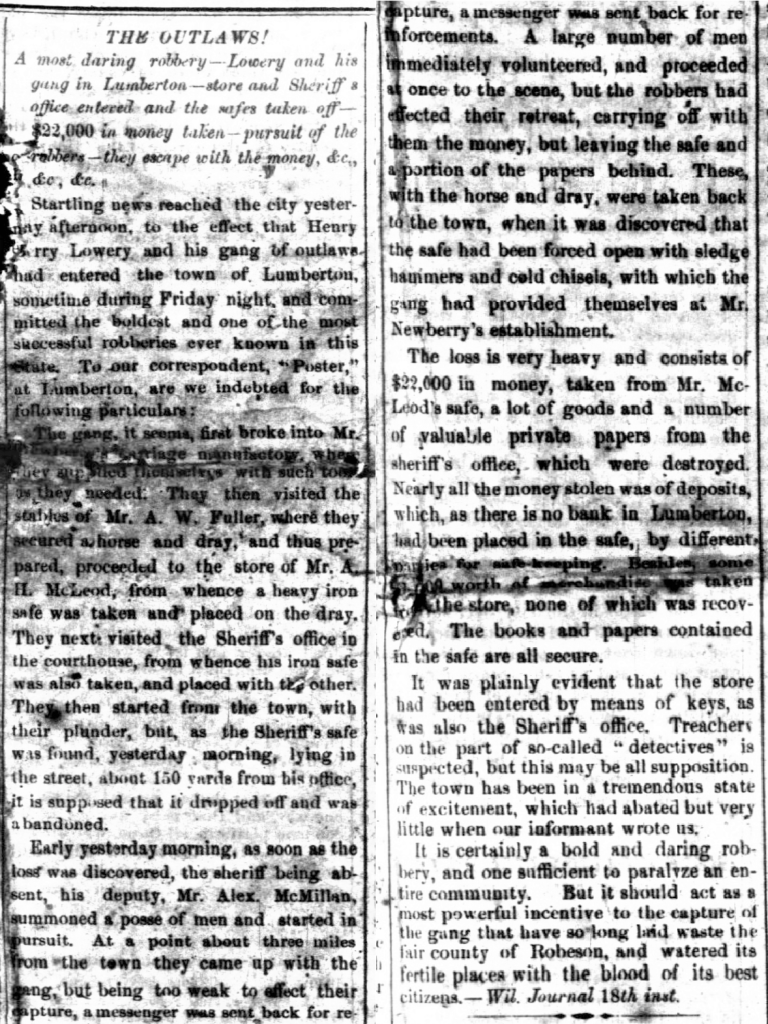
The Weekly Sentinel, February 28, 1872
In 1869, governor William Holden put a $12,000 bounty on Lowry’s head, which resulted in bloody conflict over the next few years. After successfully evading capture, Lowry planned his final heist in February of 1872. The gang stole a safe from a local carriage manufacturer and were bold enough to take another from the sheriff’s office, walking away with $22,000 (about $520,000 today) and then he disappeared. The bounty was never collected and he was never heard from again. Some locals claim they saw him at a friend’s funeral years later, but we will likely never know what happened to Henry Berry Lowry.
Over the next year, we’ll be adding millions of newspaper images to DigitalNC. These images were originally digitized a number of years ago in a partnership with Newspapers.com. That project focused on scanning microfilmed papers published before 1923 held by the North Carolina Collection in Wilson Special Collections Library. While you can currently search all of those pre-1923 issues on Newspapers.com, over the next year we will also make them available in our newspaper database as well. This will allow you to search that content alongside the 2 million pages already on our site – all completely open access and free to use.
This week’s additions include:
Asheboro
Charleston
Charlotte
Culler
Elizabeth City
Goldsboro
Greensboro
Halifax
Hertford
North Wilkesboro
Oxford
Plymouth
Raleigh
Red Springs
Reidsville
Rockingham
Rutherfordton
Salisbury
Sanford
Shelby
Tarboro
Taylorsville
Wadesboro
Warrenton
Washington
Winston-Salem
If you want to see all of the newspapers we have available on DigitalNC, you can find them here. Thanks to UNC-Chapel Hill Libraries for permission to and support for adding all of this content as well as the content to come. We also thank the North Caroliniana Society for providing funding to support staff working on this project.
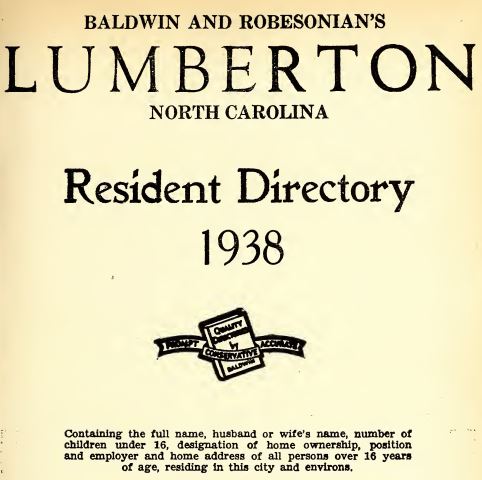
Directory from North Carolina Collection, UNC-Chapel Hill
Our colleagues over at the State Library of North Carolina are highlighting a North Carolina county every week, and in honor of this week’s county, Robeson, we are taking a closer look at the city directories from Robeson’s county seat, Lumberton.
In DigitalNC, we have four city directories from Lumberton, that span the time period of 1916-1956. The directories highlight the changes and growth in Lumberton over this time as it moved from a town of approximately 3,000 residents to one of 18,119 people by 1956. City directories, which were printed by private companies, provided many of the services that a telephone book did later in the 20th century, but they tended to include more elaborate information about the residents in the town, had extensive advertisements, and often added civic information. The Lumberton city directories were no exception.
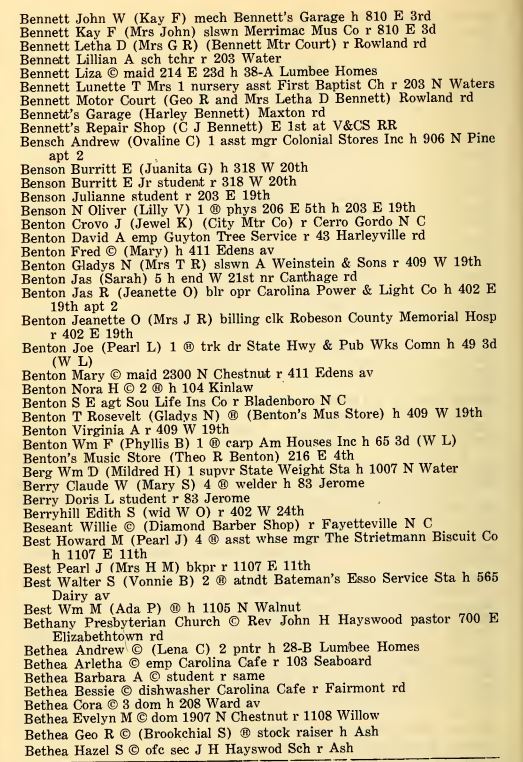
Example of directory information on residents. Directory is courtesy of the North Carolina Collection, UNC-Chapel Hill.
The directories for Lumberton in DigitalNC were published by three different publishers, all based out of South Carolina; Gardiner, Baldwin, and Nelson. These publishers took it upon themselves to do a census of all the residents and businesses in town. The information gathered on the residents not only included their address, but how many people lived in the house and their occupations. Information such as race and whether or not the house was owned by the resident was also included.
Extensive civic information is also included in several of the directories, particularly those produced by Baldwin. Not only is a town history provided, with images of the hospital and schools in the town, but also a complete listing of who was in office at the time, both in the North Carolina government and every single member of Congress, and the Supreme Court.
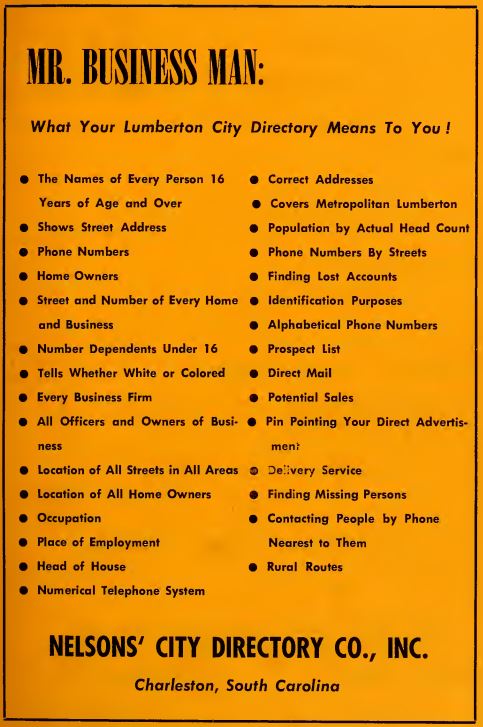
Encouraging business owners to advertise in the directory, as this was the publisher’s source of revenue. Courtesy of the North Carolina Collection, UNC-Chapel Hill
As the city directories were handed out free to those in the town, revenue for the directories came from advertisements, which are a rich source of information about the types of businesses in the town and the types of products they were selling. You can see over time how there was a shift from locally owned small shops to more franchise based operations. For example, in 1916 a local millinery shop is advertised and in the 1956 directory, several regional and national department stores are advertising.
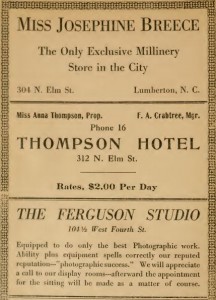
Ads in the 1916 City Directory. Courtesy of the North Carolina Collection, UNC-Chapel Hill.
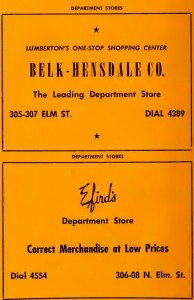
Ads from the 1956 City Directory. Courtesy of the North Carolina Collection, UNC-Chapel Hill.
The Lumberton city directories provide a microscope on the town in the early half of the twentieth century and are a rich resource for anyone wanting to learn more about what the 1916 directory advertises as “A Desirable Place for Good Citizens to Live.”
For more information on the history of city directories and their use as a research tool in the 21st century, the New York Public Library has an excellent blog post here. For more city directories from towns and cities across North Carolina, check out DigitalNC’s City Directories Collection.














